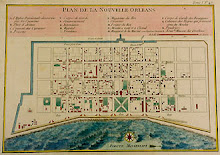 The young Mario Praz
The young Mario Praz The older Mario Praz
The older Mario Praz
Spark's article goes on to describe him sitting under a leak in the roof of the opera house: "sure enough, there was our dear Malocchio sitting under the afflicted spot," enduring his own private rainstorm. The burden of such a reputation would turn anyone into a recluse.
 These friends won't blame you for their bad luck - Praz's drawing room at the Palazzo Ricci (from The House of Life)
These friends won't blame you for their bad luck - Praz's drawing room at the Palazzo Ricci (from The House of Life)This eminent outcast eventually assembled one of the finest collection of Empire, Regency and Biedermeier furniture and decorative arts in private hands at the time, paid for by his work as a translator (he translated most of his English contemporaries into Italian). His oddly fascinating memoir, The House of Life (a reply to the roman a clef written by his estranged ex wife, who considered their marriage a tomb), catalogues his collection in terms of relationships with the various people who passed through his life when he wasn't haggling with dealers. A description of a rare objet will end with an anecdote about T.S. Eliot; his attempt to show his affection for his daughter with fine Empire furniture in her nursery was not met with the hoped-for gratitude.
The collection now resides in the Museo Mario Praz, located in his final apartment in the Palazzo Primoli, over the Museo Napoleonico on Via Zanardelli. http://www.museopraz.beniculturali.it/
 The Grande Galleria
The Grande Galleria The Scrivania
The Scrivania
The Salle della Biblioteche (3 pictures above courtesy the Museo Mario Praz)
*http://www.nytimes.com/books/01/03/11/specials/spark-rome.html



























6 comments:
Great, another book I feel compelled to read. I am intrigued.
Fascinating post. Fascinating character. Fascinating blog.
what is the roman a clef written by his ex-wife
I've been searching for that for some time...
Thanks for introducing me to Praz in your engaging post. Two wonderful words to play around with now: gusto (the italian way) and malocchio . I'm thinking of the heavenly twins: malocchio and pinocchio. PS I want a pug too.
I can't wait to go to Rome just to see his amazing collection. It's amazing what this man put together over the years without a lot of money! He was not a millionaire but his taste and collections overpast many people with money!
Post a Comment